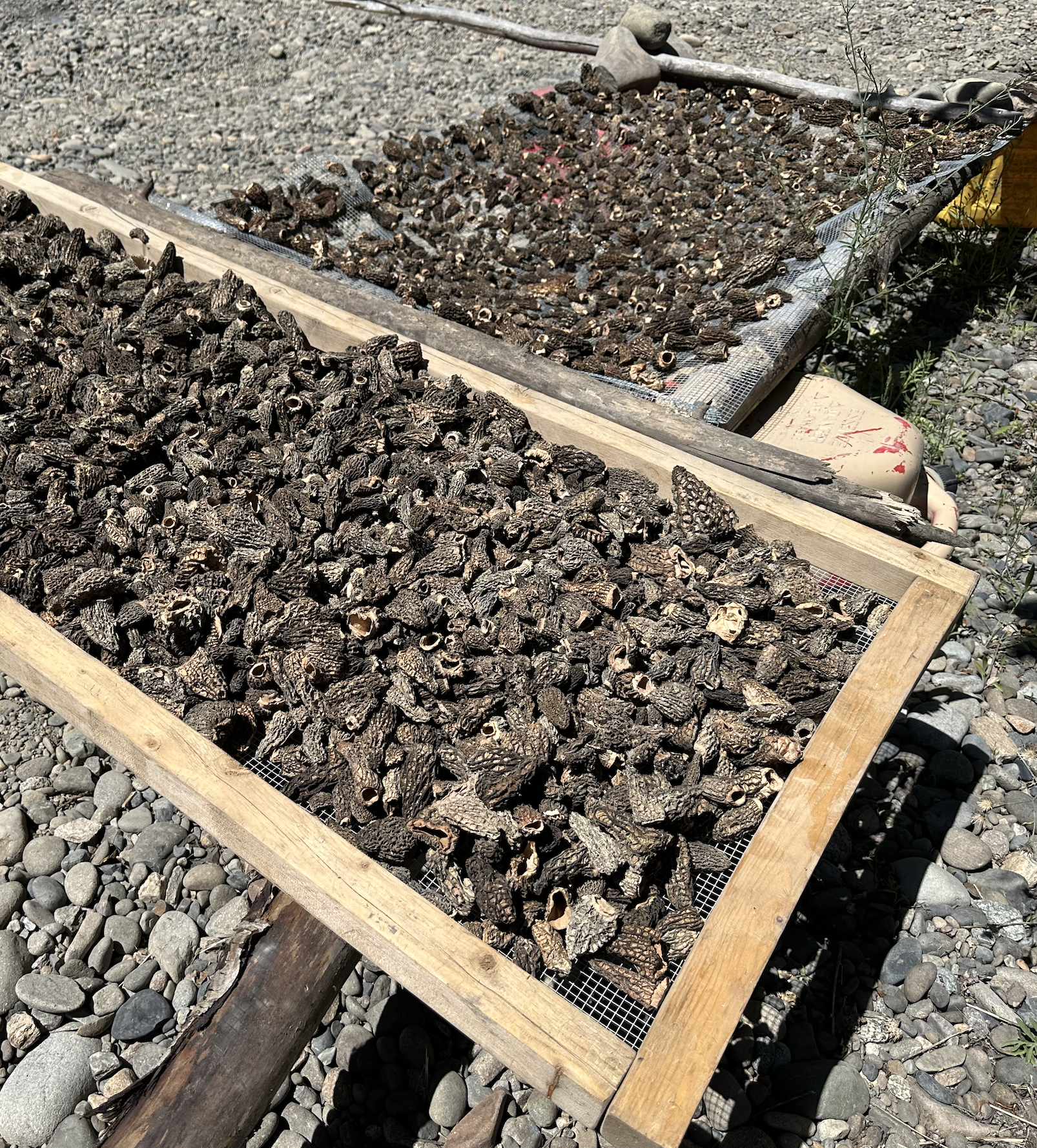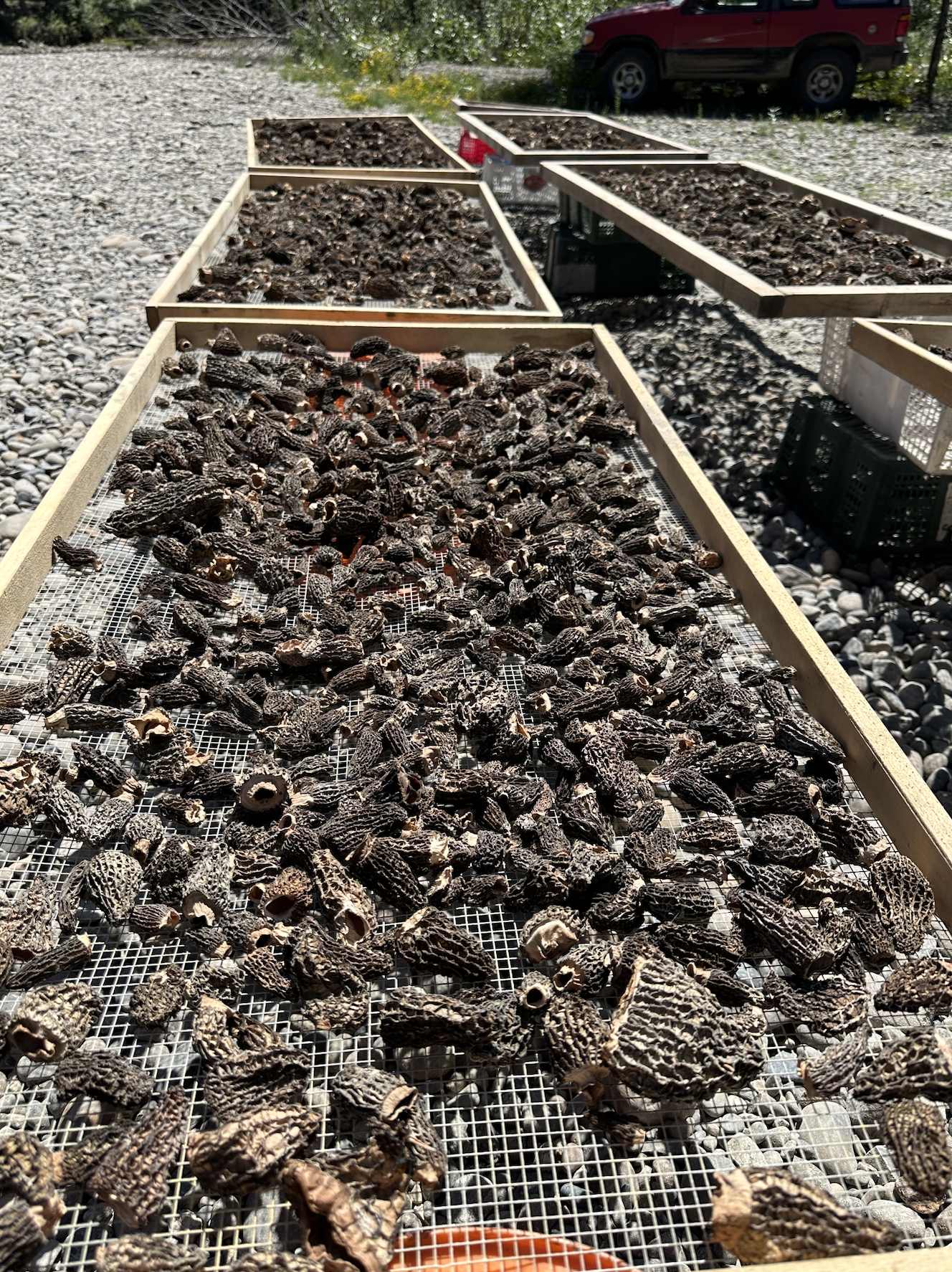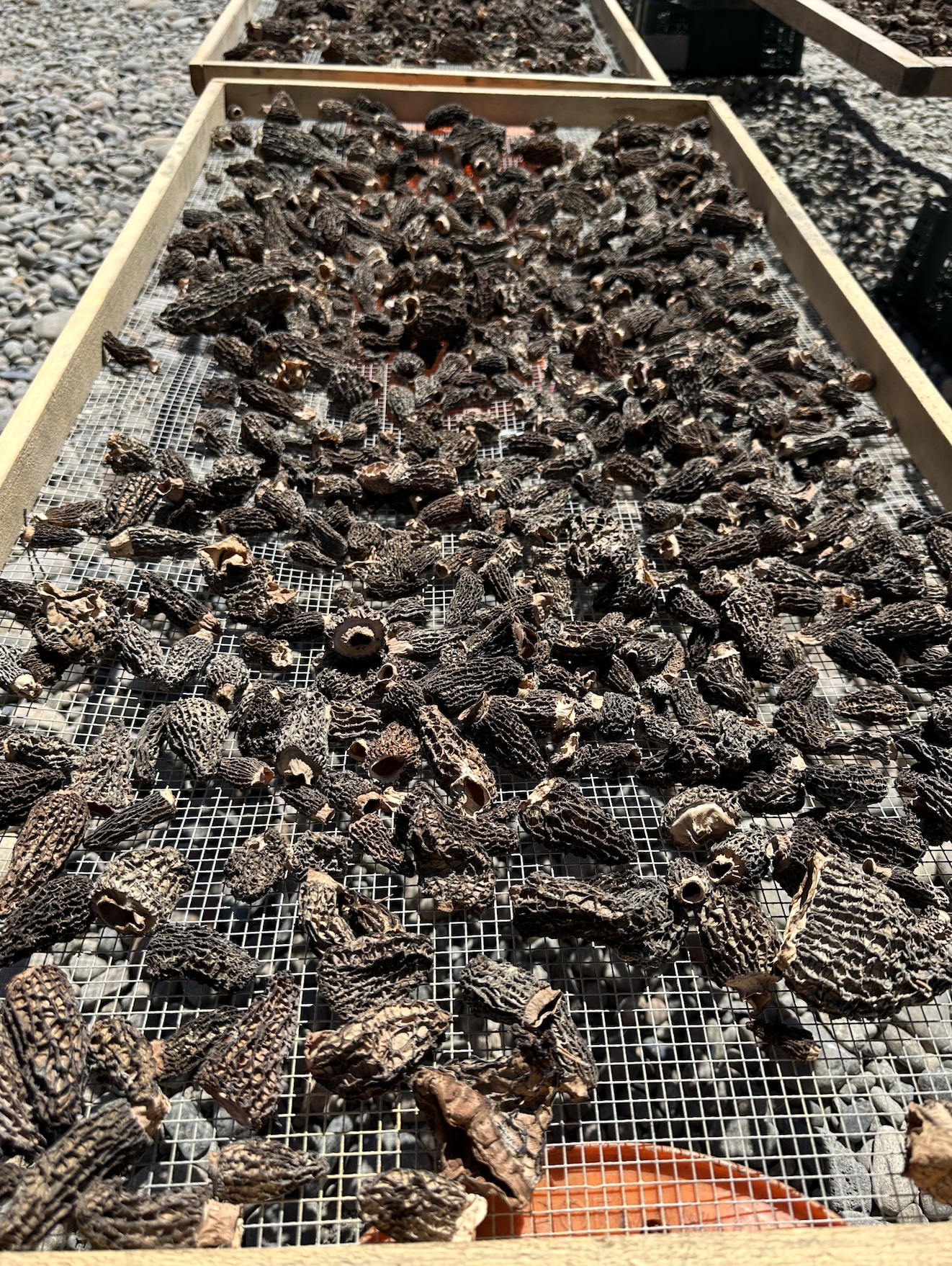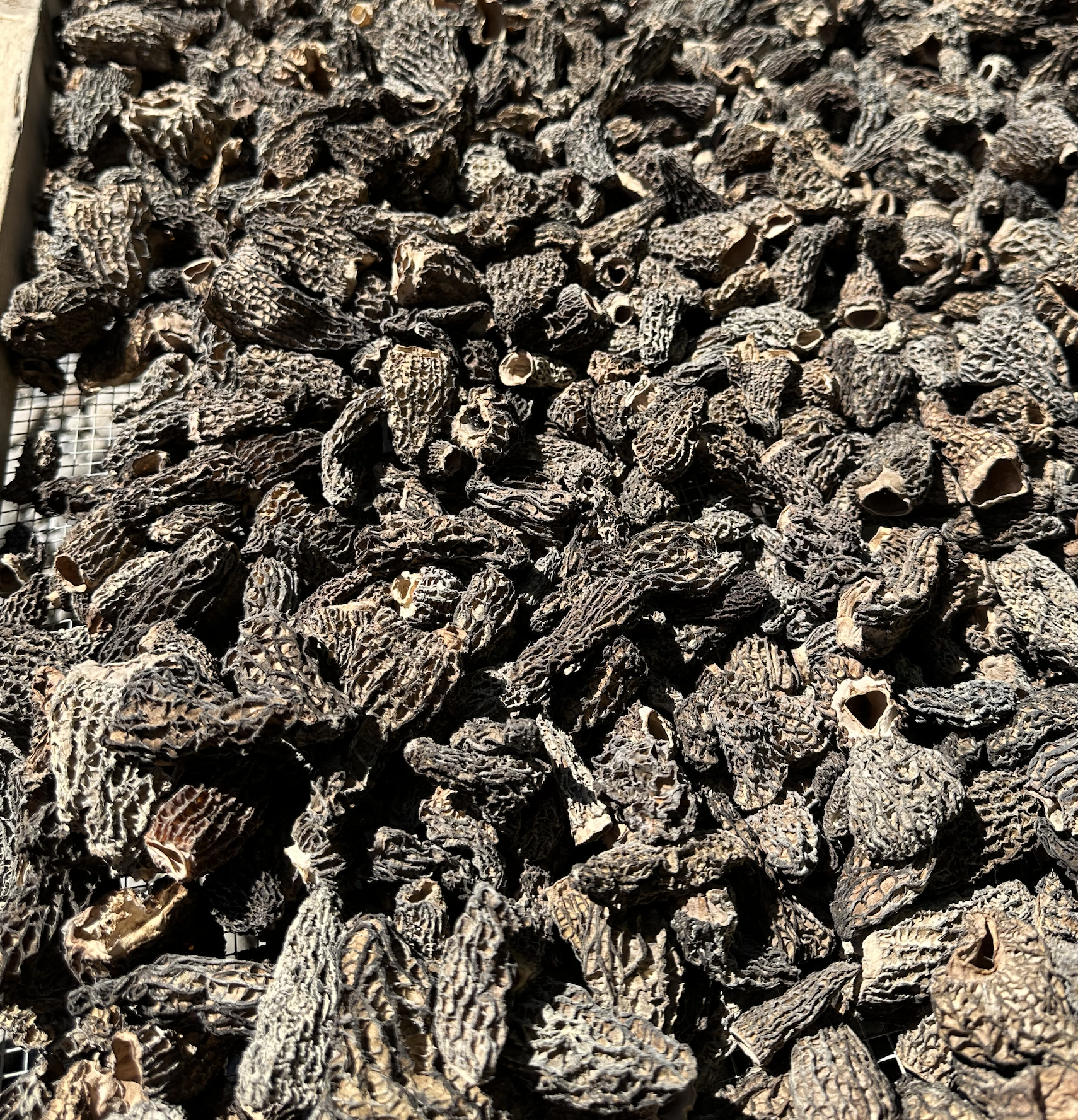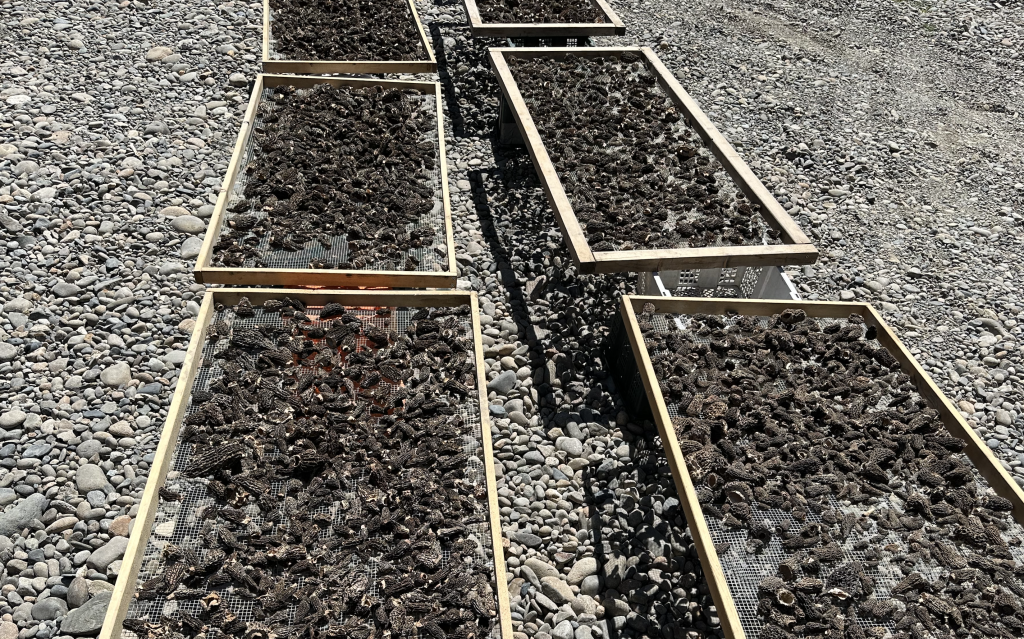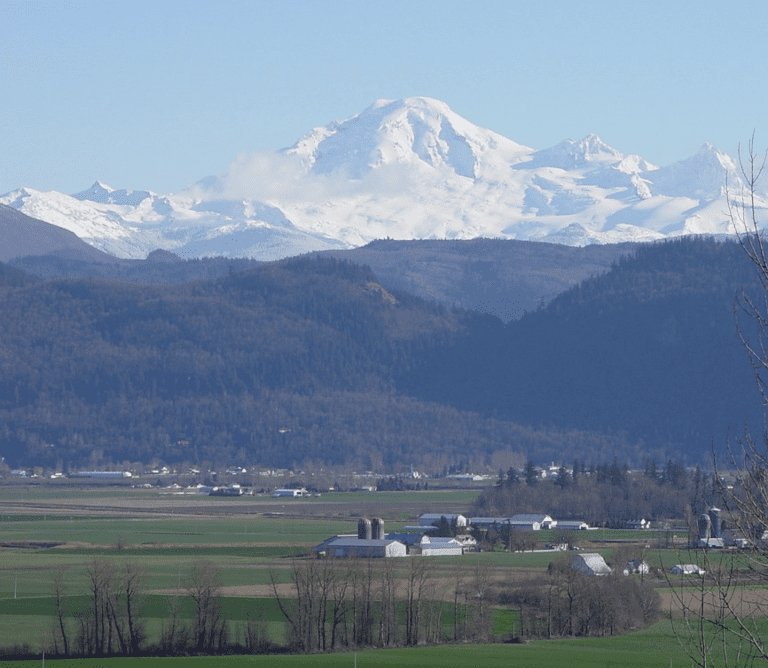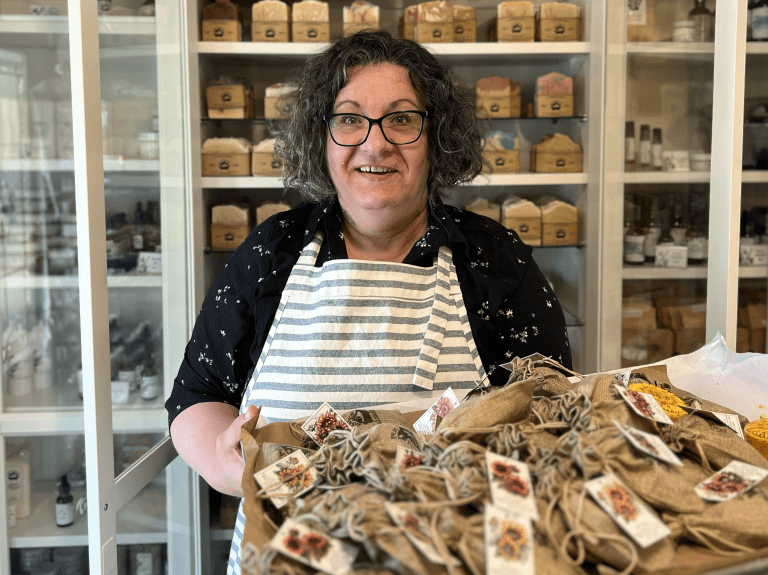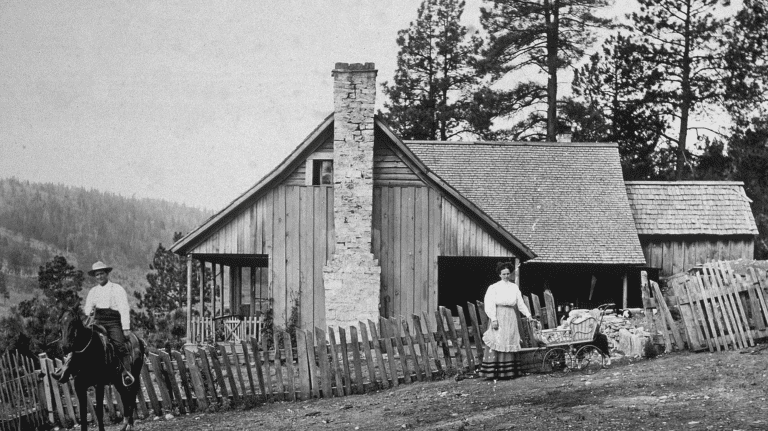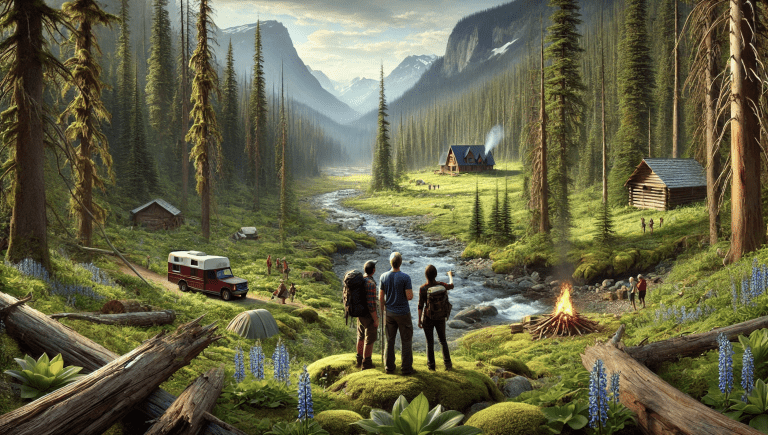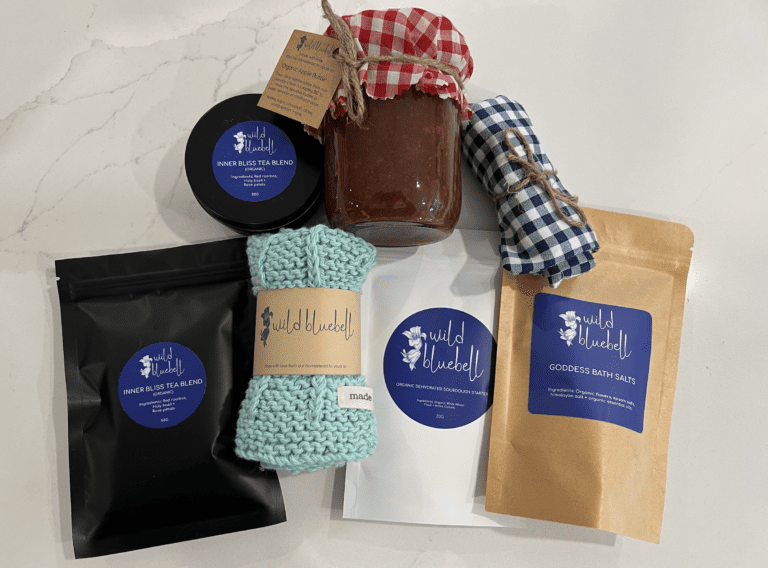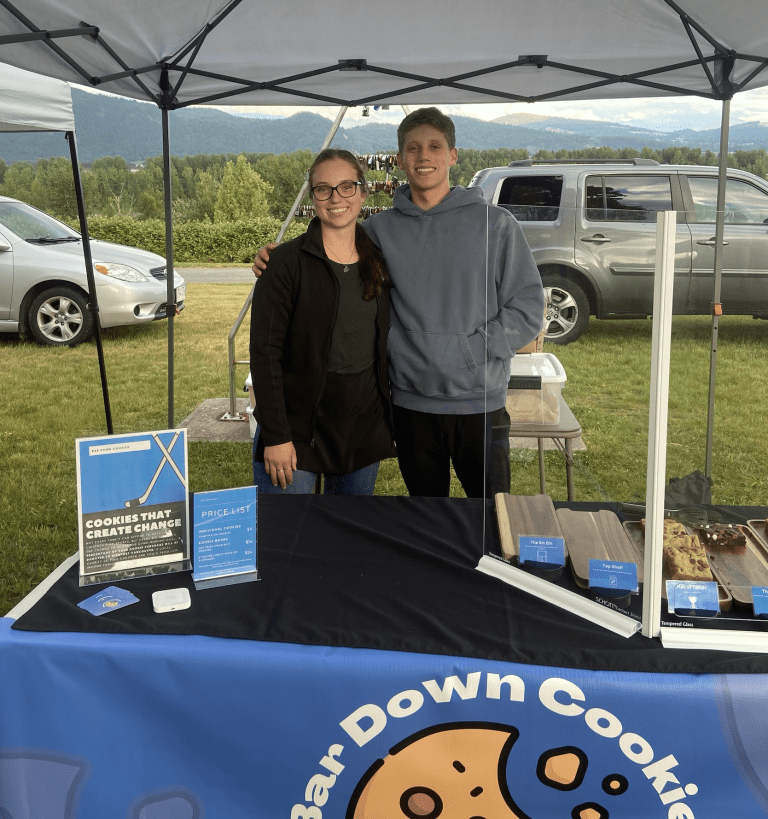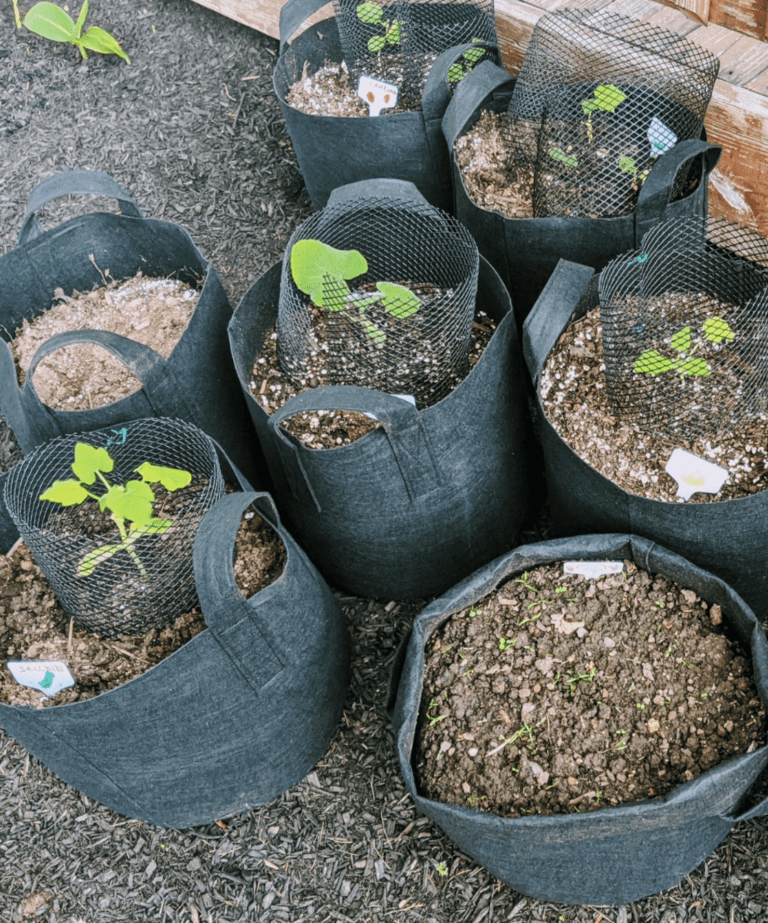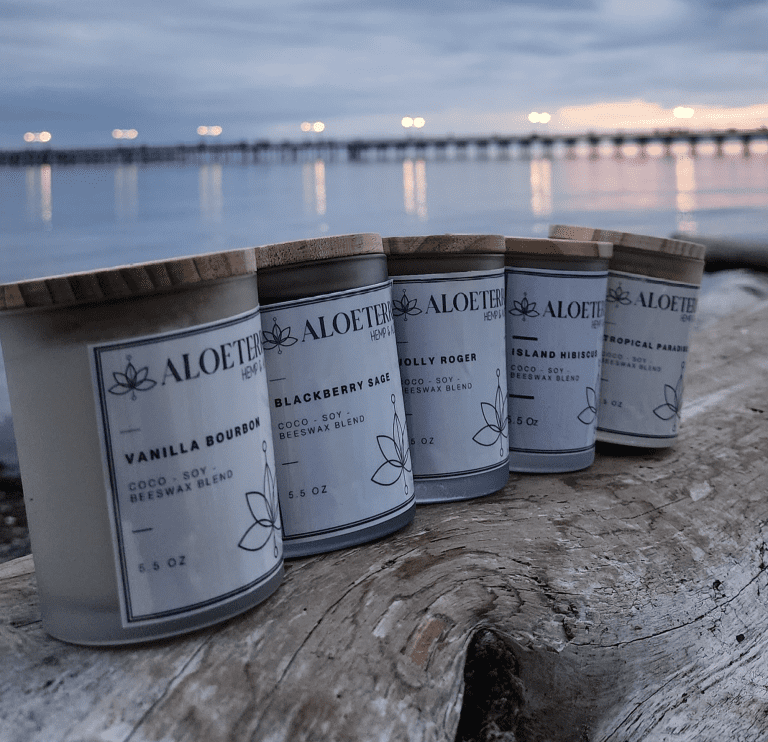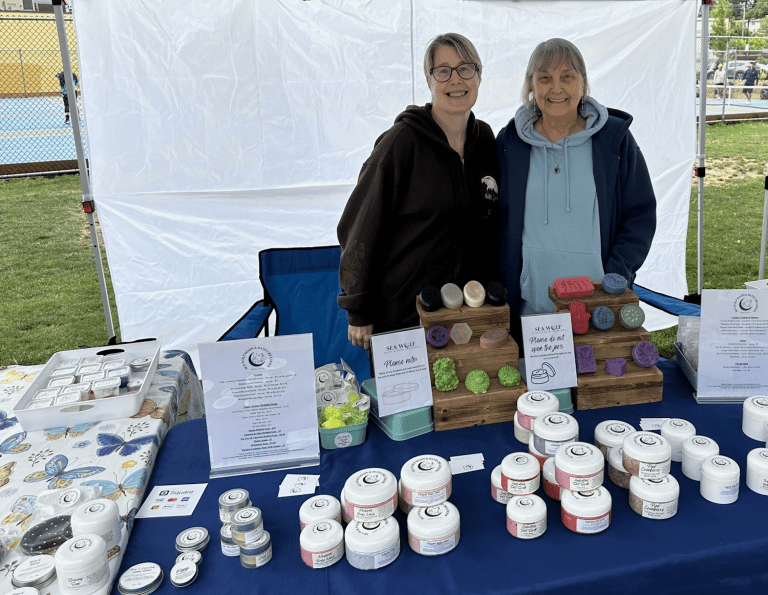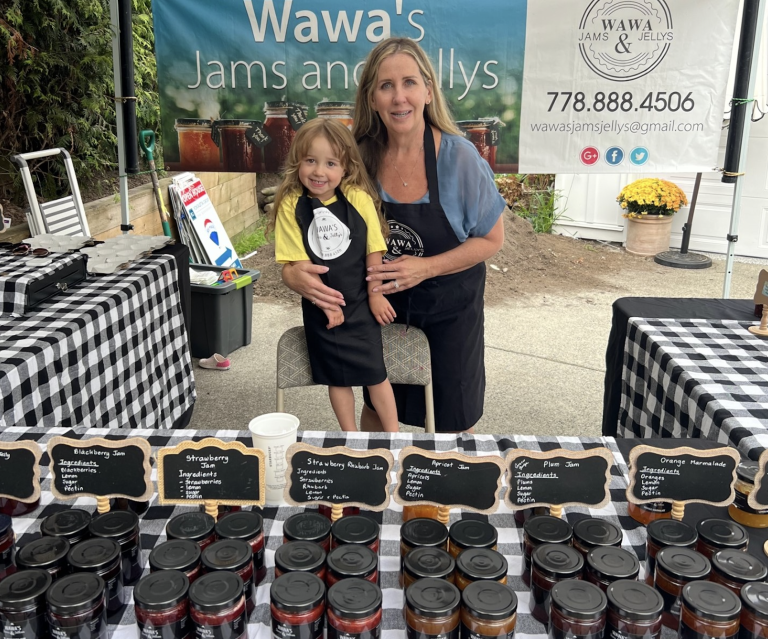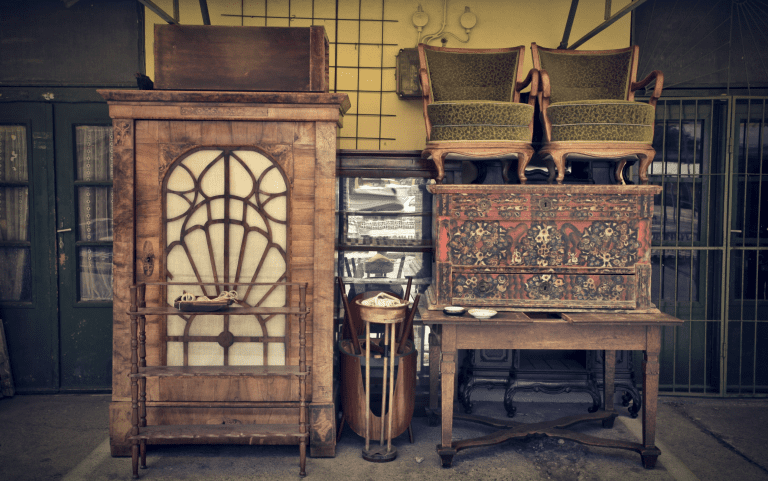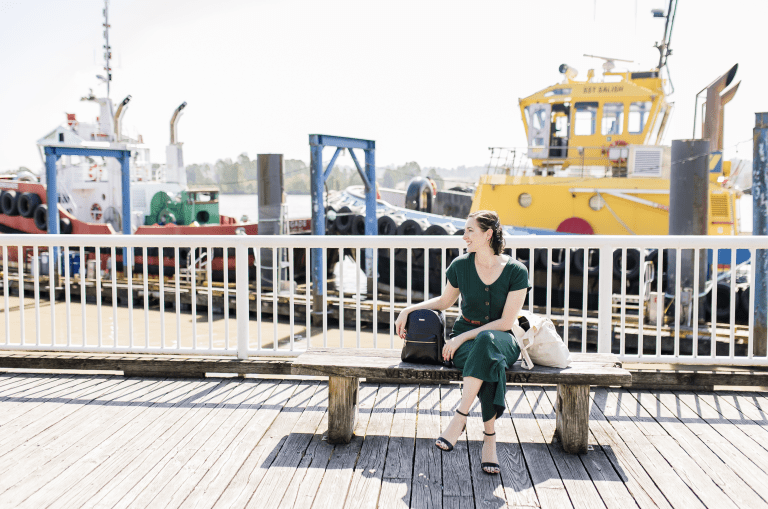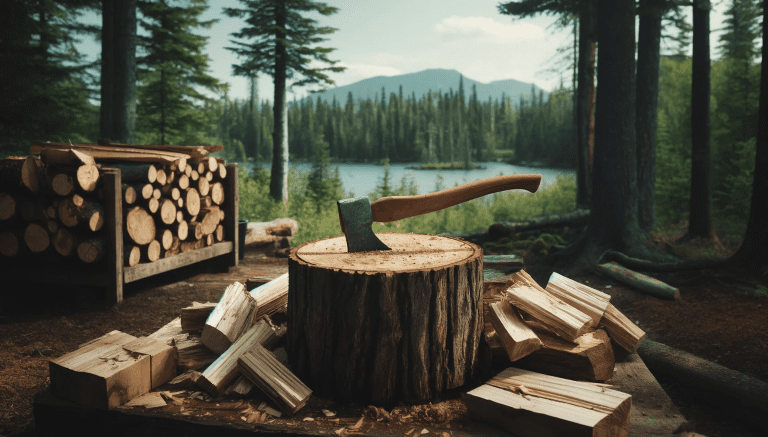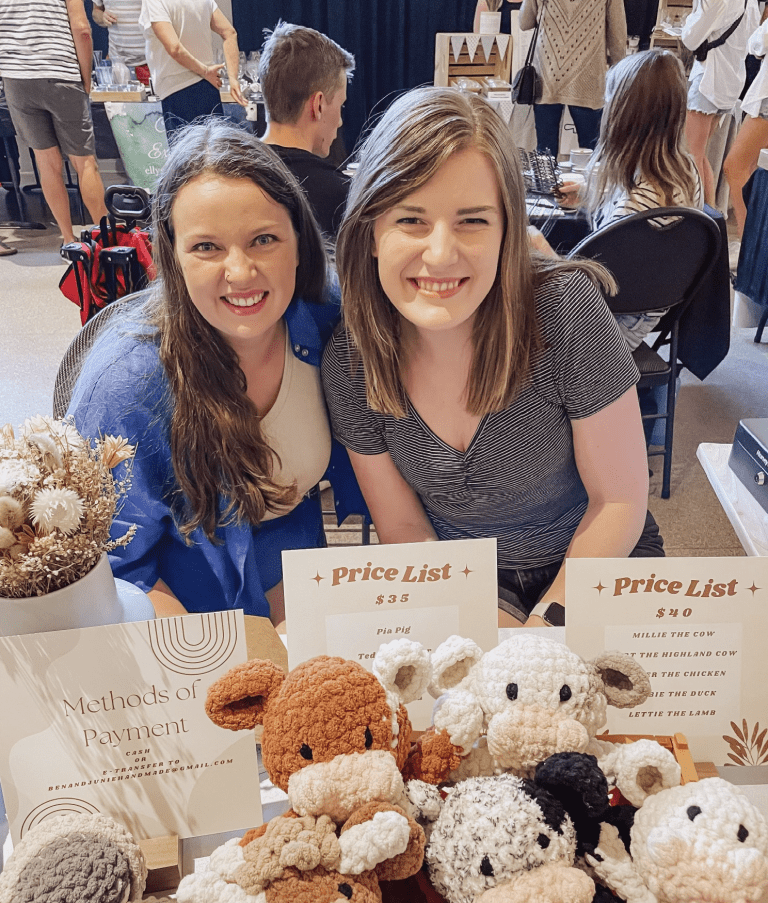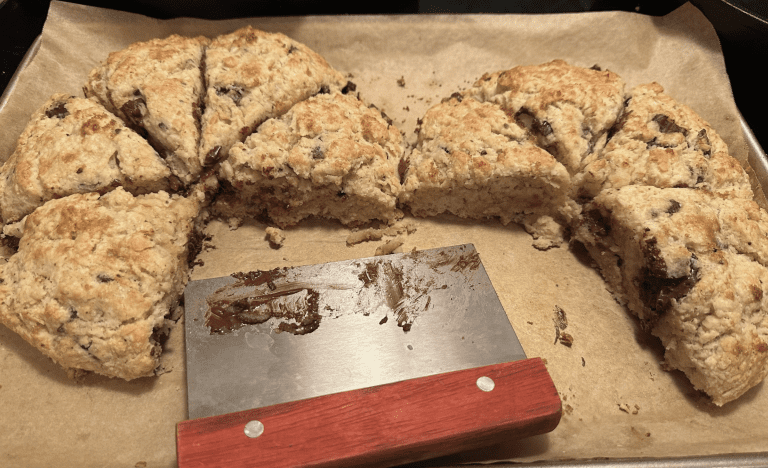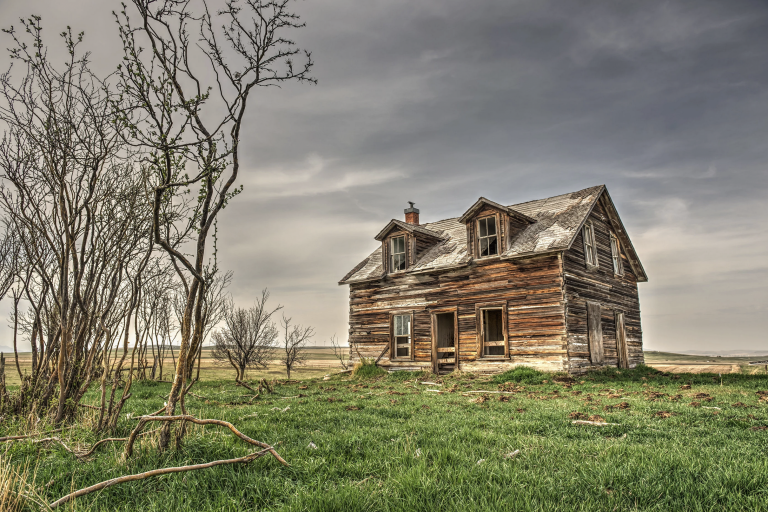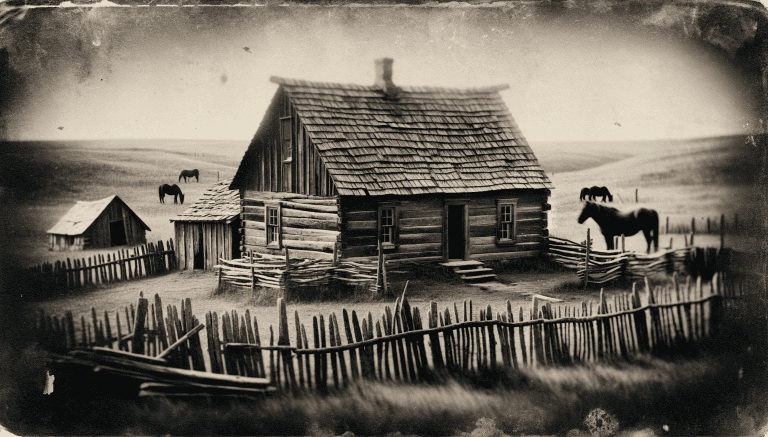Welcome to the Wild Bluebell Homestead blog, where seasonal knowledge, scientific insight, and ancestral tradition converge. Today, we explore one of British Columbia’s most coveted wild edible fungi: the wild morel mushroom (Morchella). These mycorrhizal marvels emerge each spring in fire-scorched forest floors, floodplain woodlands, and disturbed montane ecosystems across the province. Whether you’re a gourmet forager, mycology enthusiast, ecological steward, or just beginning your journey into wild foods, this in-depth guide is your complete resource for identifying, locating, and responsibly harvesting wild morel mushrooms in British Columbia, Canada.
For me—the husband of Lou Meggiato of Wild Bluebell Homestead—morels are tied to place, memory, and the deep ecology of our home. I first encountered them as a boy at Canim Lake in the South Cariboo. My grandfather Ken, a seasoned bushman, trapper, and Black Angus rancher, built our cabin with hand-peeled logs and a pulley system, adjacent to a dirt airplane runway he maintained for local homesteaders and trappers. There, among the sunlit duff and charred pine trunks, I picked morels with my grandmother Bev—a multi-generational forager, homesteader, gardener, and painter who taught me the quiet language of seasonal rhythms. Our time together was more than survival; it was symbiosis. Those early lessons now guide how we forage, preserve, and share nature’s gifts at Wild Bluebell Homestead.
Understanding Wild Morel Mushrooms: Taxonomy, Biology, and Morphology
Taxonomic Framework and Phylogenetics
Wild morel mushrooms belong to the genus Morchella, within the order Pezizales and family Morchellaceae. These fungi are ascomycetes (sac fungi) that reproduce sexually via ascospores formed within microscopic asci lining their pitted caps. Phylogenetic analysis of Morchella has revealed extensive species diversity and geographic endemism. As of 2024, over 70 species have been described worldwide, with at least a dozen regularly occurring in western North America.
In British Columbia, commonly encountered species include:
- Morchella elata (black morel)
- Morchella eximia (fire morel)
- Morchella tomentosa (gray fire morel)
- Morchella snyderi
- Morchella importuna (naturalized urban morel)
These species demonstrate diverse ecological strategies, including saprobic behavior in disturbed substrates and facultative symbiosis with hardwoods and conifers. Notably, post-fire species such as M. eximia and M. tomentosa exhibit pyrophilic tendencies, fruiting prolifically after wildfire events due to increased soil alkalinity, nutrient release, and reduced competition.
Morphological Identification
Accurate identification is critical when harvesting wild mushrooms. True morels share the following diagnostic traits:
- Cap morphology: Vertically ridged, deeply pitted (honeycomb-like) cap structure
- Cap attachment: Cap is fully attached to the stipe, not free-hanging as in false morels (e.g., Verpa spp.)
- Interior anatomy: Entire mushroom (cap and stalk) is hollow when bisected
- Coloration: Ranges from creamy tan to charcoal-black, depending on species, age, and habitat
- Spore print: Pale yellow to cream
Avoid any species with wrinkled, lobed, or brain-like caps (“false morels”), such as Gyromitra esculenta, which contains the potentially lethal compound gyromitrin.
Why Wildfires Yield Morels: Ecological Triggers and Soil Chemistry
The strong association between morels and burned landscapes is rooted in both mycological behavior and post-fire soil ecology. Fire removes vegetative competition, exposes mineral soils, and increases soil pH due to the accumulation of wood ash. These environmental changes act as fruiting triggers for certain species of Morchella, especially those adapted to thrive in recently disturbed ecosystems.
Key ecological factors influencing morel emergence include:
- Soil temperature: Optimal fruiting occurs between 10–13°C at a depth of 5–10 cm
- Moisture cycles: Spring rainfall followed by warming, sunny conditions
- Fire intensity: Moderate to high-intensity burns produce the richest flushes
- Canopy openness: Light penetration to forest floor accelerates soil warming
- Substrate composition: Sandy loam with good drainage and elevated post-burn alkalinity
Fruiting typically begins on south-facing aspects early in the season and progresses to north-facing or shaded terrain later as temperatures rise.
Best Places to Forage Wild Morel Mushrooms in British Columbia
British Columbia’s vast and ecologically varied terrain produces an abundance of suitable habitats for wild morel mushrooms, particularly following wildfire seasons. The following regions have been historically productive and continue to offer excellent morel picking opportunities under the right post-fire and seasonal conditions.
Similkameen River Valley – Pasayten River and Calcite Creek
Crown land in the Similkameen River corridor, particularly near the Pasayten River and Calcite Creek, supports strong post-burn fungal recovery. These Douglas-fir and lodgepole pine ecosystems offer textbook fire morel habitat.
Okanagan-Similkameen – Nk’Mip Creek, Thomas Creek Fire Zones
Wildfires in this region have created high-quality post-burn habitat. The mix of ponderosa pine, Douglas-fir, and dry interior forest types paired with consistent spring precipitation make it an excellent early-season picking zone.
Thompson-Nicola – White Rock Lake and Monte Lake Burn Areas
This large-scale, mixed-severity burn west of Monte Lake and Falkland has yielded abundant black morels and fire-associated species in montane coniferous forests.
Cariboo Region – Canim Lake, 100 Mile House, Lac La Hache
Lodgepole pine and mixed conifer forests near Canim Lake have burned repeatedly over the decades, creating a natural cycle of disturbance and regrowth. These traditional homesteading lands remain one of our favourite morel zones.
North Thompson Valley – Barrière to Clearwater
Burn areas near the North Thompson River, including the Bush Creek East Fire zone, offer remote but high-yield habitat. Late spring into early summer provides optimal conditions in these higher elevation forests.
Boundary Country and Kootenay-Boundary – Rock Creek to Grand Forks
These southern interior fire zones produce scattered morel populations, particularly around previous burns and logging cuts in Douglas-fir and spruce-dominated forests.
East Kootenays – Cranbrook, Canal Flats, Fernie
Fires in this region affect a mix of montane and subalpine conifers. While morels are less abundant than in other areas, they can be found along old burns and riparian fringes.
Bulkley Valley and Central Interior – Smithers, Houston, Burns Lake
Later-season flushes (June to early July) occur here due to elevation and snowpack retention. Burn scars from recent lightning strikes or prescribed burns can yield productive harvests.
Peace River District – Fort Nelson, Fort St. John
The northern boreal forests occasionally produce morels, particularly after moderate-intensity burns in aspen and spruce stands. Picking here is highly seasonal and localized.
Foraging Regulations and Responsible Harvesting
- Crown Land: Permitted for personal use
- Provincial Parks: Foraging prohibited
- First Nations Territories: Always obtain consent; respect cultural protocols
- Wildlife Management Areas: Some are closed post-fire (e.g., McTaggart-Cowan/nsək’łniw’t)
- Sustainability: Harvest selectively, use mesh bags for spore dispersal, and leave small or dried mushrooms
Culinary, Medicinal, and Nutritional Value
Morel mushrooms are renowned for their culinary versatility, meaty texture, and rich umami profile. They contain protein, dietary fiber, iron, phosphorus, and vitamin D (when sun-exposed). Though not traditionally used in Western herbalism, they are considered immunomodulatory and antioxidant-rich in traditional Asian medicine.
Preparation Tips:
- Always cook before consumption to neutralize thermolabile toxins
- Dehydrate for storage; rehydrate in warm broth or water
- Pairs well with cream, wine sauces, garlic, wild game, and seasonal greens
- Avoid alcohol when consuming large quantities, as some individuals report sensitivity
Share Your Experience
At Wild Bluebell Homestead, wild morel foraging is a ritual of reciprocity, observation, and deep connection to the land. These mushrooms are a gift from fire and forest alike. If you’ve foraged wild morels in British Columbia—whether in the Similkameen, the Cariboo, or far-off corners of the province—we want to hear from you. Leave a comment below with your stories, regions you’ve explored, or tips you’ve learned.
Let’s grow this community of respectful, informed, and ecologically rooted foragers together.
